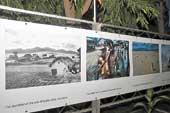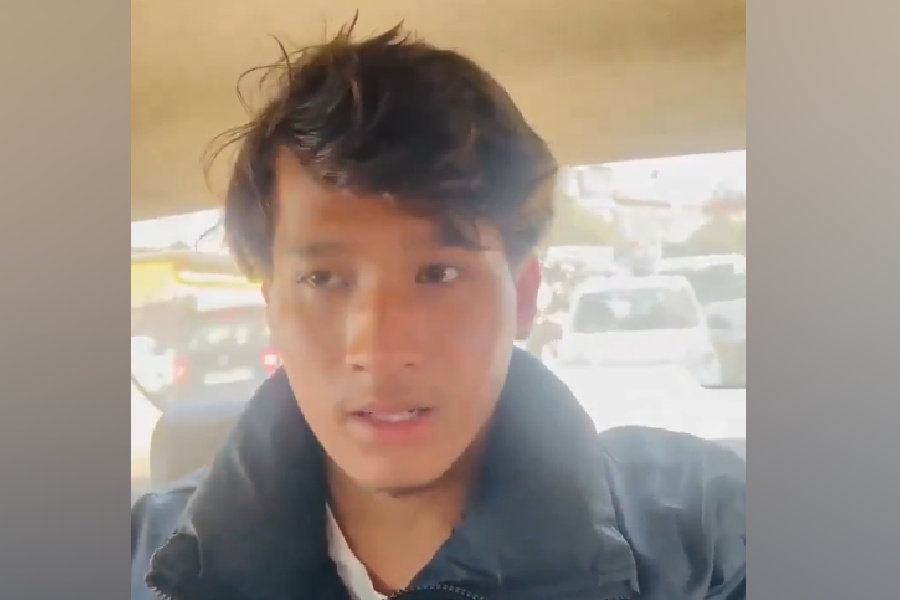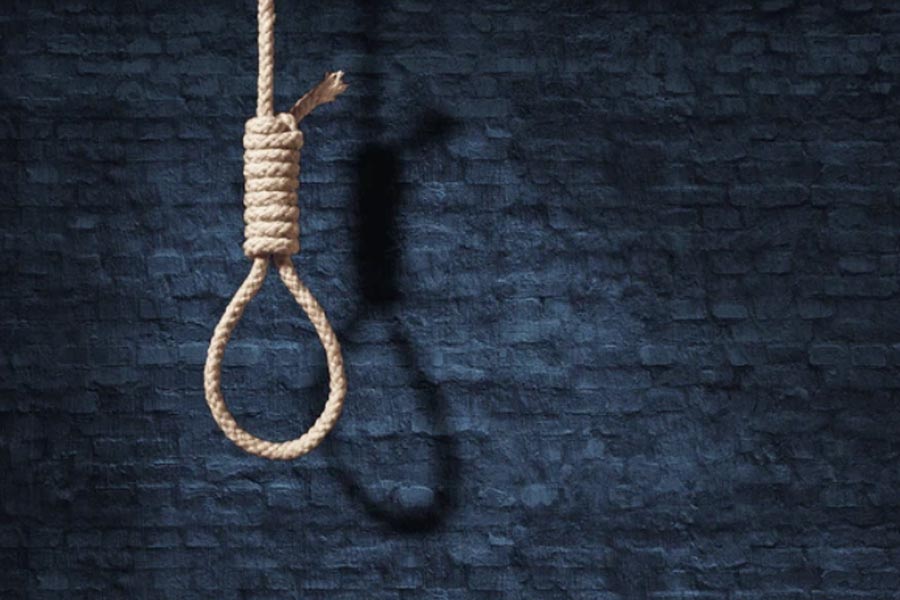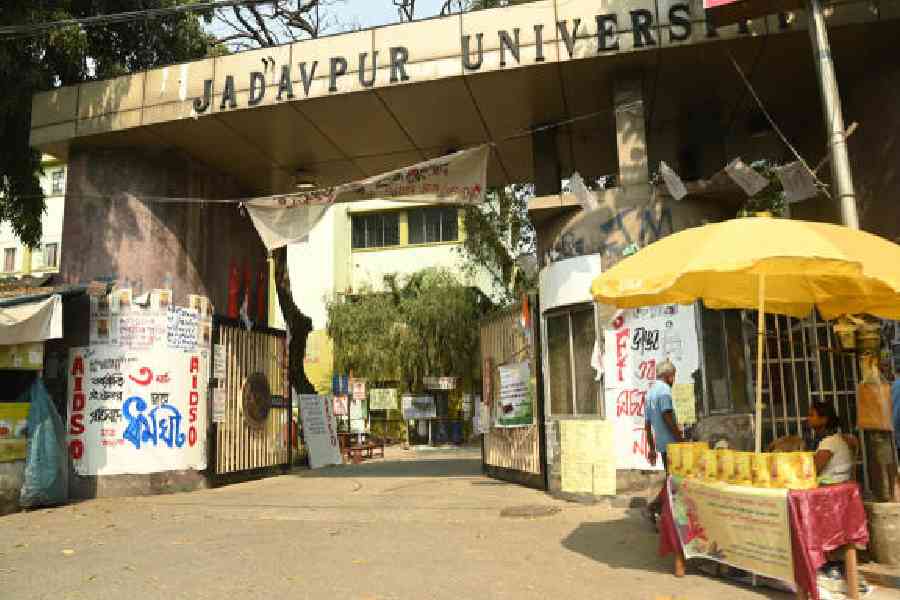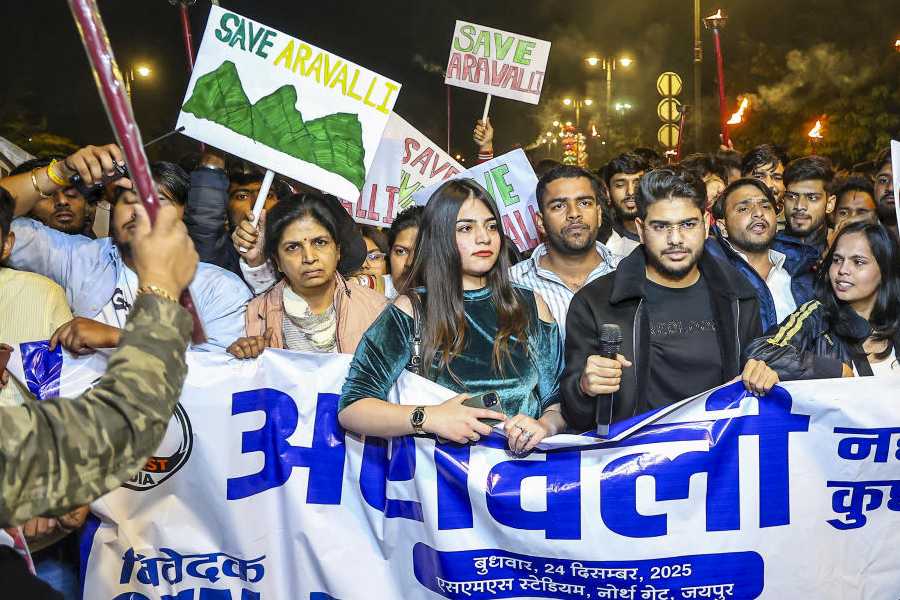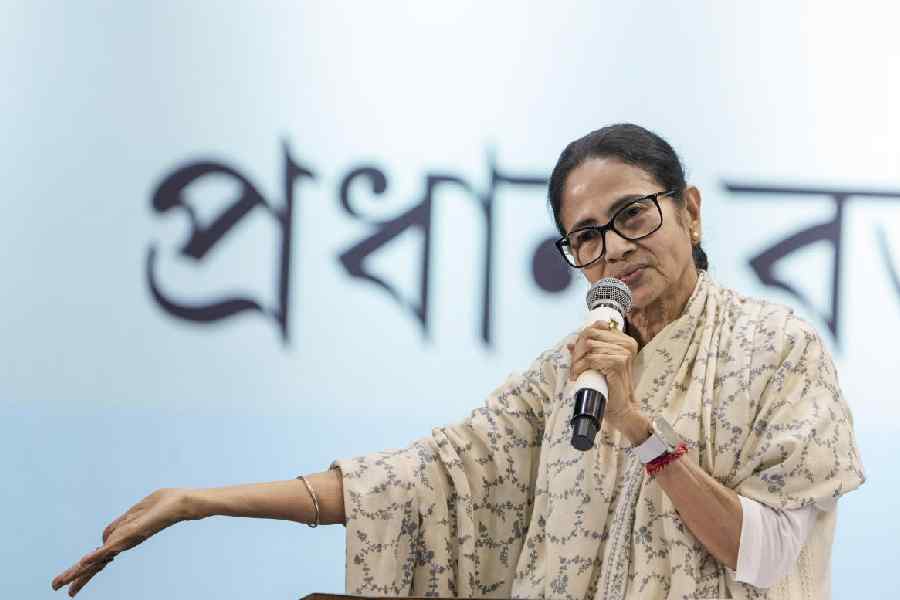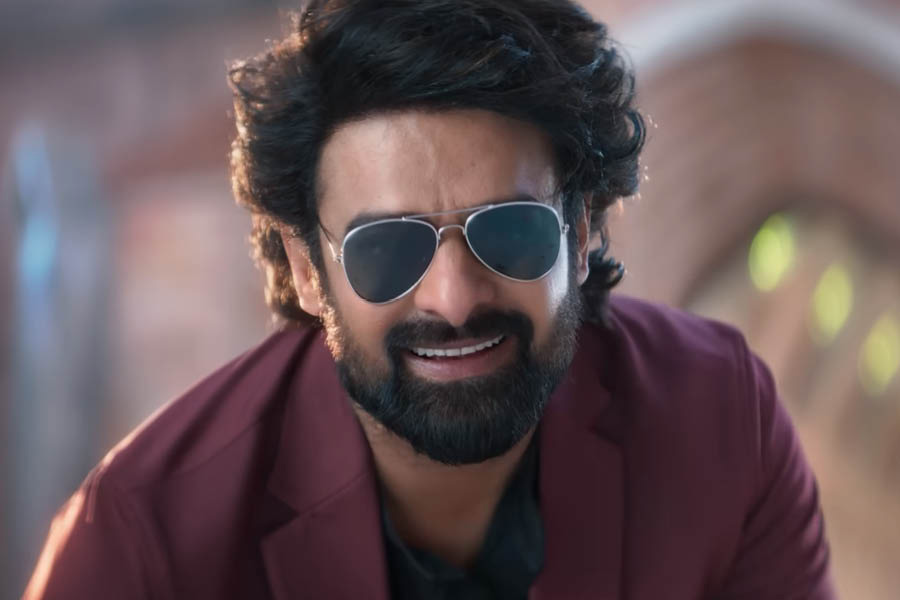 |
 |
| Hard Rain, an exhibition of photographs taken and compiled by Mark Edwards, and (below) the two sides of a gold coin showing Zeus hurling a thunderbolt. Pictures by Pabitra Das and Sanjoy Chattopadhyaya |
Hard Rain, an exhibition of photographs taken and compiled by British photographer, author and environmental campaigner Mark Edwards, would remind many viewers how poverty, loss of habitat and human rights are linked to climate change.
Presented by the British Council, in association with the Birla Industrial and Technology Museum (BITM), the exhibition takes off from a Bob Dylan song A Hard Rain’s A-Gonna Fall. Taken over decades, the exhibition matches photographs with every line of the song to portray the human predicament now.
The exhibition begins with a black and white photograph taken in Kathmandu years ago, of open fields with a few scattered houses. Later in the exhibition is displayed a more recent, smaller photograph of the same place where every inch of space seems to have been taken up by houses. The barrenness of a wide expanse in the Island of Hispaniola with just stubs of trees is scary. The dull eyes of political prisoners of the Pol Pot regime in Cambodia stare out from another frame.
If some of the pictures are in-your-face and gut-wrenching, some look beautiful till placed in their context. The ice cap melt forms a rich blue stream amidst frozen banks. The notes by Edwards introduces you to each frame. It’s as good as walking down the display with the photographer.
Edwards will hold a photography workshop at BITM on December 20. Those interested need to apply by December 15. Contact: shonali.ganguli@in.britishcouncil.org.
Mark of a king
Punch-marked copper coins from Taxila, gold and silver coins of Alexander with the imprint of the conqueror’s head, a horse on a Samudragupta gold coin and the zodiac coins of Jehangir — the Indian Museum has brought out from its treasure trove a rich collection of coins from various eras for an exhibition at the coin gallery till December 20.
“The aim is to give the people a glimpse of the museum’s collection,” said K.K. Basa, the director of the museum. “This is the first time such an exhibition is being held in the city. The coins are very valuable, so security is a big concern.”
The earliest indigenous coins are punch-marked. They are of different shapes and sizes. The coins bear symbols drawn mainly from nature. They are uninscribed, making it difficult to ascertain who issued them.
Coins with inscriptions of the ruler, either in the form of an image of the king or his symbol, were introduced to India with the arrival of Alexander. These coins date between the fourth century BC and the third century AD. One of these coins bears an image of Alexander chasing Porus; another of Zeus hurling a thunderbolt.
A range of coins issued by Samudragupta after his asvamedha yagna in which he declared his dominion over a large part of the country deserves special mention. One famous gold coin shows Samudragupta playing a lyre. A coin issued by Shashanka shows him reclining on a bull, perhaps evidence that he was a Shaivite.
The coins of the Muslim era usually do not have pictorial devices. Most coins bear the Kalima on one side and the name of the issuer on the other.
 |
Freedom to see
What happens when you give a kid a camera and freedom? The results were on display at Voices of Children: India, an exhibition of photographs by children from across the world, held at the Academy of Fine Arts recently.
Organised by the University of Wollongong in Australia, the annual exhibition had participants from 12 countries, including India, the US, Malaysia, Zambia and Hong Kong.
The participants, aged between eight and 12 years, were given a camera each and asked to click anything. The photographs varied from a kitchen scene to a fisherman, from school friends to kids wearing elephant masks. Pictures by 30 children from Calcutta were among the exhibits.
“I clicked my cousin standing on our verandah during Durga puja,” said Sreyashi Bhattacharya, a Class VII student of the G.D. Birla Centre for Education. “The photographs from India show that kids here really care about their family and religion,” said Roslyn Westbrook, from the University of Wollongong.
Old boys & girls
Reunions tend to be predictable affairs, but five years ago the English department of Jadavpur University turned theirs into a carnival, with fortune-telling tents, tattoo parlours, hair-braiding stalls and funny hats. The JUDE reunion returns later this month on Sunday, 27 December, with its usual quota of drollery and high jinks but this time there is a serious purpose to all the merriment. Departmental alumni are all set to endow three studentships for students in economic distress, which will provide round-the-year support for maintenance and academic expenses. Each studentship will be worth Rs 30,000 a year and will be named after eminent ex-teachers of the department.
That is not all. The department has drawn up a programme to increase alumni participation in the community life of the university. This will include occasional short courses specially designed for alumni, an alumni lecture series, and a Net-based alumni database. The long-defunct Ranajay Karlekar Memorial Quiz — named after one of the legendary teachers of the department — is being resurrected with a new edition on 16 January 2010. For more details on the reunion, write to judereunion@ gmail.com, or call 9830788349.

